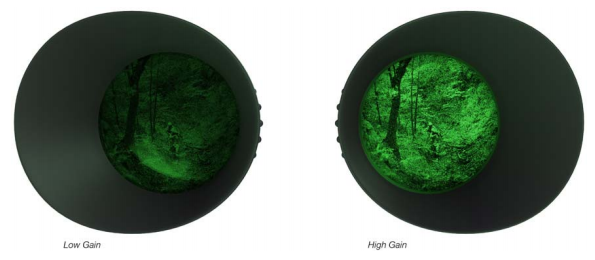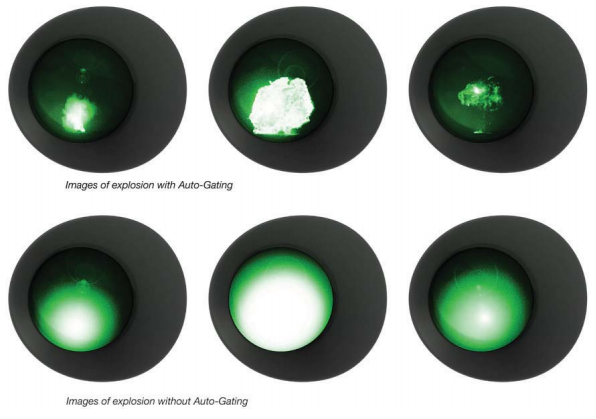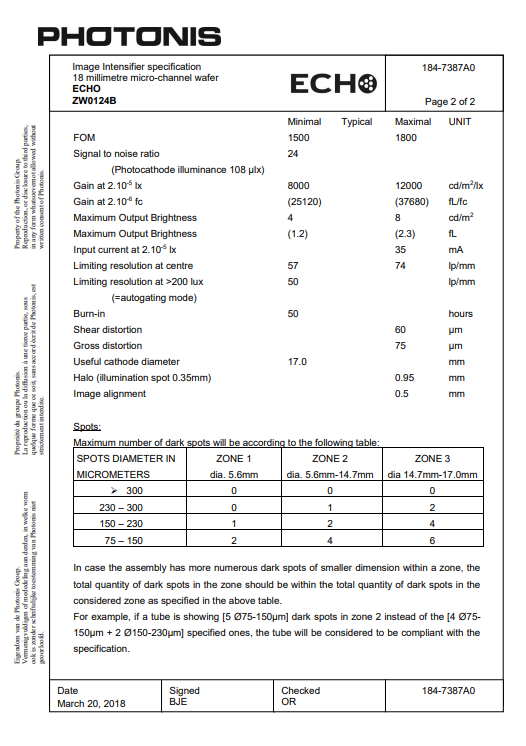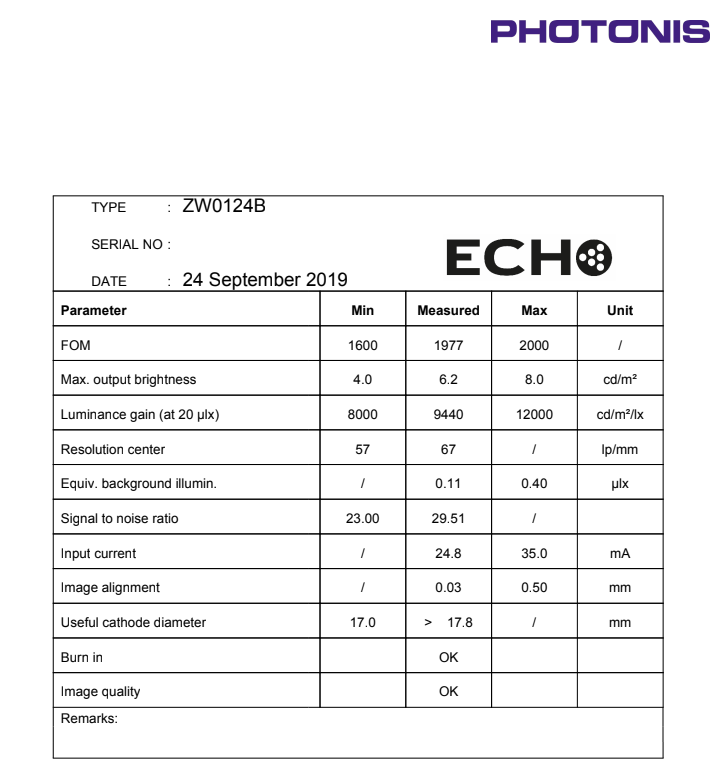NVG
Acronym for "Night Vision Device"
IR
Stands for infrared. It refers to a wavelength that is invisible to the naked eye but to which tubes are sensitive. Simply put the tube "sees" the IR but our eyes can't see the IR. Conversely the tube allows us to see the IR.
Gain
The ability of a tube to multiply electrons. A good image being worth a thousand words, here's the difference between a low and high gain tube (respectively left and right).

Autogating
The ability of a tube to self regulate its gain depending on the intensity of the light it is subjected to. In other words the tube constantly protects itself from sources of light and reacts accordingly. The main advantage of autogating is it allows a tube to function in a dynamically lit environment and allows the user to see an exploitable image in such conditions. Autogating will however not protect the tube 100% if exposed to prolonged bright light.
Autogating is particularly important for military and law enforcement use when they're using unsuppressed firearms and are exposed to explosions.
Photonis currently is the leader when it comes to autogating technology, mostly thanks to their "Ultra Fast Autogated" technology present on their Echo / Echo+ / 4G / 4G+ series of tubes.
The following images show the different reactions of two tubes, one autogated (top), one non-autogated (bottom).

Resolution
The resolution of a tube describes its ability to precisely render an object in given light conditions. The unit for measuring resolution is lp/mm, aka Line pairs per millimeter. Simply put, it measures the ability of a tube to distinguish a number of black and white line pairs printed over 1mm. The higher the value, the more accurate the image rendered by the tube will be.
The picture below illustrates this line pair notion by showing a tube (to the left) with lower resolution than the one on the right.

Signal to Noise Ratio (SNR)
The SNR is a ratio that determines the performance of a tube and its capacity to render a clear and precise image depending on the luminous intensity the tube receives.
All tubes behave the same way which means that as luminosity decreases the rendered image will degrade and become grainy until the tube reaches its limits and only grain will clutter the image. It is at that point that turning on an IR light source will be required to see a clear and exploitable image again.
Even the best tube in the world will be subjected to such limits, the difference being the higher performing the tube will be, the less residual light it will need to render a clear image. As such SNR measures the tube's ability to maintain a clean image depending on the amount of residual light. The higher the SNR, the more performant the tube will be considered. An SNR of 20 is considered a good SNR while an SNR of 30 is rated excellent.
The following picture shows two different tubes with two different SNRs. The notion of grainy image is apparent here with the tube on the left having a lower SNR than the one on the right.

Figure of Merit (FOM)
FOM is the most commonly used way of determining a tube's performance. It is calculated multiplying Resolution by SNR. The higher the FOM, the higher the performance of the tube.
Field of View (FOV)
The FOV of an NVG is its angle of vision. Generally speaking the FOV of a device is of 40° but certain models offer a wider FOV, thus allowing to see more at the same given distance.
Halo
This effect describes the luminous halo which surrounds an intense light source. It is the consequence of an optical reflexion of electrons inside the tube. As explained earlier, Gen2 tubes are better at mitigating halos than Gen3, although the latter have improved in that field. Photonis is the undisputed leader in halo mitigation technology. The following picture shows the difference in halos between a Photonis tube and a Gen3 tube.

Black Spots or Blems
Blems, also known as black spots are fixed, visible spots located in the field of vision of a tube. They are immobile and won't evolve over time.
Black spots are a side effect of standard tube manufacturing process and are in no way related to the tube's performance or operation. Milspec tubes have a strict set of requirements for blems and only tolerate very few or none at all. Commercial tubes available on the civilian market are subjected to a less stringent set of requirements, thus tubes that failed to pass the milspec qualification generally end up on the commercial market.
However, although commercial tubes tend to have more blems (we've never witnessed commercial tubes with over three blems) their performance remains very high. These spots are barely visible under normal conditions and generally reveal themselves when used in high brightness environments, conditions under which NVGs become generally unnecessary.
Data Sheet
Document stating the minimal and sometimes maximal specification for a model of tube. The Data Sheet does not represent the exact performance of a given tube. This can only be shown by the Specsheet.
The following picture is an extract of a Photonis Echo tube datasheet.

Specsheet
Specsheet : A tube Specsheet represents the exact measure of its performance. It compiles the three datum previously exposed, including FOM. The Specsheet indicates (among other things) the tube's serial number and its date of manufacture. The Specsheet is printed by the manufacturer after the tube's completion and quality control.
The following Specsheet (the serial number of which was redacted) comes from a Photonis white phosphor ECHO tube.

OMNI
OMNI represents neither the performance or the technical data of a tube. It only states the year the United States military signed the sales contract for a specific tube.
In order to be eligible for sale, the tubes must at least qualify for the technical specifications defined by OMNI.
As repeated multiple times above, it is very complicated to compare tube performances without their respective Specsheets.
Tube format or Drawing
Many different tube formats exist, and all of these tubes are made to fit inside a specific housing and have different MSRPs.
At NODS, we have standardized on 37mm MX10160 or MX11769 with manual gain. That way, our tubes are compatible with a majority of devices.
